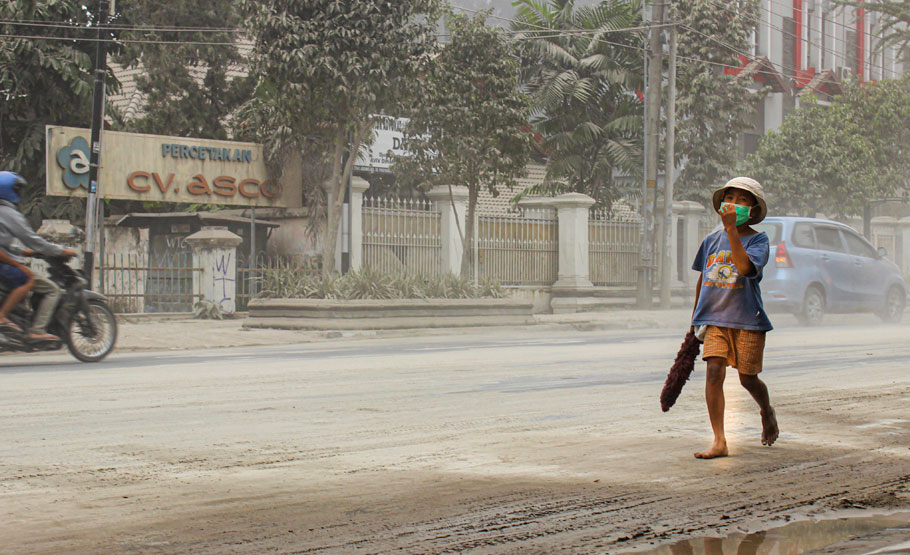
Around 10% of the world’s population lives near a historically active volcano. When a volcano erupts, there may be critical dangers for those caught in the explosive force of the eruption (for example, lateral blasts, ballistic ‘bombs’ and pyroclastic density currents). However, by far the most wide-spread hazard is airborne emissions, carried by winds over hundreds to thousands of kilometers from the volcano. These emissions include volcanic ash (particles of fragmented magma less than 2 mm in diameter), aerosols and gases.
Inhaling fine-grained ash can cause irritation in the respiratory tract (rhinitis, sore throat, cough) and can exacerbate existing respiratory diseases like asthma, bronchitis and COPD [1]. It is still not established whether long-term exposures can trigger respiratory diseases like lung cancer and silicosis [1]. Due to these uncertainties, a precautionary approach is usually taken, so humanitarian agencies will often distribute facemasks to protect communities.
Research led by Prof Claire J. Horwell (Durham University, UK) has, for the first time, investigated the effectiveness of different forms of respiratory protection for community use in volcanic eruptions. The project, ‘Health Interventions in Volcanic Eruptions’ (HIVE), involved laboratory testing of the efficacy of different facemasks and wearability trials in communities affected by volcanic ash. Social surveys and interviews, in Indonesia, Mexico and Japan, were also implemented to explore behavioral and socio-cultural dynamics that influence the use of respiratory protection, and how to tailor effective messages on protection. An evaluation of the ethics of agencies distributing low-quality respiratory interventions was also undertaken.
The research findings have already influenced agency decision making in several eruptions, including the eruptions of Agung, Indonesia (2017; see Case Study at the end of this article), Fuego, Guatemala and Kīlauea, Hawaii in 2018. A suite of PAHO-endorsed public information products, co-designed with communities, are available online.

